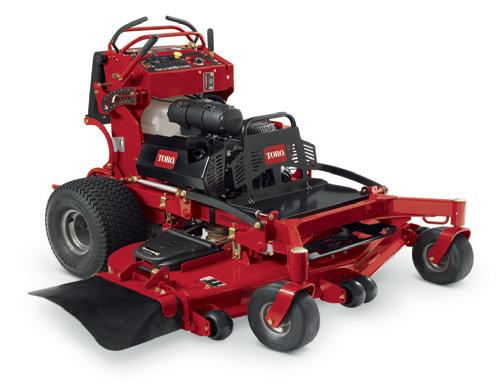















The third week in September marks the annual National Indoor Plant Week, a nation-wide celebration of indoor plants. Countless studies have shown the importance of introducing plants into indoor settings. Plants have been found to reduce overall stress levels, improve memory, increase focus, accelerate healing from an illness, and purify the air!
The week educates on the importance of live plants inside, and to show that plants are more than just décor.
Plants have other health benefits like creating oxygen, reducing indoor carbon dioxide, and keeping us connected to nature.
If you put your indoor plants outside for the summer, a general rule is to move them back inside when nighttime temperatures shift below 55 degrees F.
Before I bring mine in, I’m going to lightly spray the foliage with insecticidal soap, early in the morning, a few days before moving them indoors. I do not want spider mites or other pests setting up indoor residency this winter.
I will also be placing different plants in different rooms depending on their light requirements. Plants that need full sun should
be placed near south-facing windows. Plants that prefer partial sun should be placed in an east- or west-facing window.
I will also be careful to not overwater them. It’s the number one cause of houseplant death. When I do water them, I’ll collect the excess water in a tray or a saucer. I will never allow my plants to sit in water. I usually wait until the soil is dry about an inch below the surface before I add water.
At the end of September, when the ground starts to cool, I’ll be planting some daffodil bulbs with the pointed side up. I’m going to be sure they are all planted six to eight weeks before the ground freezes.
After planting them in clusters, to get that early burst of color creating a cool visual impact, I’m going to install a layer of chicken wire over them to keep nature’s critters from digging them up. Then I’m going to gently back-fill the holes with loose soil.
I’m going to finish up with watering them to fill any air pockets, and to stimulate root growth. Nature will do the rest until spring.
Before September ends, I’ll be helping my resident birds build fat reserves for the falling temperatures. What a great way to enjoy the changing season.
Editor’s Note: Tom Castronovo is executive editor and publisher of Gardener News. Tom’s lifelong interest in gardening and passion for agriculture, environmental stewardship, gardening and landscaping, led to the founding of the Gardener News, which germinated in April 2003 and continues to bloom today. He is also dedicated to providing inspiration, and education to the agricultural, gardening, landscaping and nursery communities through this newspaper and GardenerNews.com.

As we approach the end of summer and the days begin to shorten and the nights become cooler, the New Jersey Department of Agriculture would like to remind gardeners and homeowners that this is the perfect time to do some landscaping around your home and/or in your community.
Attractive, healthy landscaping increases the value of your property (referred to by real estate professionals as “curb appeal”), creates a sense of well-being and quality of life, and holds several other benefits. It can create a habitat for birds and pollinators, improve air quality and soil erosion issues, and help improve the energy efficiency of your home – all through the wonderful world of plant life.
Depending on the scope of your planting project, you may wish to meet with a landscape designer and/or a landscape contractor… or you can do it yourself. One important step in the process is visiting your local nurseries and garden centers to see what plant materials are available. The staff at these operations are great at answering questions regarding growing conditions, how large the trees, shrubs or plants will be at maturity, and how to care for them.
It is no accident that former New
Get ready to discover the incredible wonders of the Conservation Reserve Program (CRP), a journey that will open your eyes to the remarkable impact it has on our cherished Garden State. Join us as we explore and uncover the countless benefits this program brings to our environment and communities.
As passionate advocates for agriculture, Farm Service Agency (FSA) understands the vital role farmers play in nourishing our communities and driving our economy. By assisting our farmers in making environmentally conscious decisions, CRP stands as a catalyst for progress in our state’s agricultural landscape.
CRP’s essence lies in preserving and nurturing our environmentally sensitive land. As we rally together, farmers and stakeholders alike, we can temporarily remove such land from agricultural production. In return, our participating farmers receive a yearly rental payment, fostering a balance between sustainable practices and prosperity.
New Jersey’s commitment to long-term environmental health and quality finds a perfect ally in CRP. With contract durations spanning 10 to 15 years, this program ensures that our efforts to improve water quality, prevent soil erosion, and safeguard wildlife habitats are firmly rooted in the future.
Diversity thrives within CRP,
Jersey Secretary of Agriculture
Douglas Fisher made it a priority to ensure that the Garden State’s nurseries and garden centers were named as “essential businesses” at the onset of the COVID-19 pandemic in 2020.
Many businesses shut down, and even some of those that weren’t had employees working from home. People needed to have access to outdoor activities, including planting fruits and vegetables for consumption, but they also were able to realize the therapeutic and mental health benefits of gardening. For those spending significantly more time at home than they were used to, the ability to get outside and beautify their own surroundings was crucial.
Now that the pandemic restrictions have been eased, folks should not forget that gardening has several mental health benefits
that were and remain critical to all of us. These include stress relief, staying grounded, providing a sense of purpose, and, according to studies, the potential to reduce the risk of Alzheimer’s and get in a good physical workout for practitioners.
In addition, being exposed to Vitamin D and natural light can build resistance to chronic disease and strengthen immune systems. For older adults, research has shown that gardening can help people maintain a healthy bloodpressure level, enhance sensory awareness and motor skills, and, where gardening can lend itself to group activities, foster and bolster social skills. If the latter of those is a goal of yours, consider joining a local gardening club. There are many throughout the state.
While you are visiting the garden centers and nurseries to
select the items you want to include in your landscape, please consider asking them about Jersey Native plants that are acclimated to our soils and growing conditions. There are hundreds of options to choose from, including flowering and non-flowering plants, trees and shrubs, and ornamental grasses that can provide excellent curbside aesthetics to your home.
And while we live in a temperate climate that brings us some cold winters, gardening can be brought indoors to continue that enjoyment through the care of plants that can survive inside until the weather warms enough to move them back to the outdoor garden again.
This is primarily why the nursery/greenhouse industry is New Jersey’s largest agricultural sector. It accounts for just shy of half a billion dollars in farmgate sales annually from nursery/

offering a range of enrollment options tailored to our state’s unique agricultural landscape. Among these choices are the General CRP, the Grassland CRP, and the Continuous CRP, which encompasses subprograms like CLEAR30, State Acres For Wildlife Enhancement (SAFE), Conservation Reserve Enhancement Program, and Farmable Wetlands Program. Embracing the one that aligns with our goals is a step toward securing a more sustainable and prosperous future.
As we forge ahead in 2024, CRP opens its arms to welcome our involvement. The CLEAR30 signup period stretches from April 1 to July 31, granting us ample time to seize this opportunity. Additionally, the Continuous CRP Signup remains accessible throughout the year, extending a warm invitation for participation at our convenience.
Recent success stories echo
CRP’s impact on our New Jersey farmlands. The Grassland CRP signup, held from April 17 to May 26, 2023, resulted in 565 acres of NJ land being put into conservation, as unveiled in our July news release. Equally noteworthy, the General CRP signup, which took place from February 27 to April 7, 2023, welcomed over one million acres nationally.
In our pursuit of constant improvement, CRP remains dedicated to enhancing its environmental impact. The introduction of higher payment rates, new incentives, and a strategic focus on climate change mitigation in 2021 exemplifies this dedication. The CRP Climate Change Mitigation Assessment Initiative, which quantifies program benefits and aligns CRP with climate outcomes, further solidifies our commitment to a greener tomorrow.
greenhouse/sod products.
The state hosts 1,660 nursery plant dealer locations, including garden centers and landscape firms (as certified in 2022). Plant dealer certification involves verification that plant dealer stock originates from certified sources and that a visual inspection of nursery stock, when present, has been conducted and passed.
With so many financial, physical, mental health, and environmental benefits to gardening and landscaping, there are more reasons to get out in the soil today than there have ever been. Visit your local garden centers and nurseries and start planning.
Editor’s Note: New Jersey Assistant Secretary of Agriculture Joe Atchison III is directing the Department, assuming the responsibilities of Secretary, until the State Board of Agriculture’s recommendation for the new Secretary of Agriculture is approved by Governor Phil Murphy. Atchison is also the Director of the Division of Marketing and Development for the department. He can be reached at 609-292-3976.
our commitment to New Jersey agriculture and its sustainable future. By embracing the opportunities CRP offers, we can elevate our conservation efforts while ensuring prosperity for our farmers and communities. To participate in CRP and contribute to this inspiring journey, reach out to the FSA office at your local USDA Service Center. Together, let’s sow the seeds of sustainability and cultivate a greener, flourishing Garden State for generations to come.
United we stand, and partnerships play a crucial role in our journey. Through collaborations like the Conservation Reserve Enhancement Program (CREP), our focus on environmental stewardship gains strength. The addition of staff and increased flexibility underlines FSA’s commitment to nurturing these valuable partnerships, maximizing their potential for New Jersey’s agricultural community.
CRP’s haying and grazing provisions come to the aid of farmers during drought conditions (D2 or higher on the U.S. Drought Monitor) or when a substantial 40 percent forage production loss occurs. Emergency haying and grazing on specific CRP practices are available in eligible counties, while non-emergency options outside the primary nesting season cater to farmers in ineligible counties.
In conclusion, let us unite in
The FSA is seeking interested candidates to fill multiple Loss Adjuster positions across New Jersey. Join our team to assist farmers in managing risk and recovering from losses. Contact Alyson Dyson at Alyson.Dyson@usda.gov or 609438-3147 for application details and more info. Make a difference in agriculture today!
Editor’s Note: Bob Andrzejczak is the State Executive Director of the USDA Farm Service Agency (FSA) in New Jersey. He can also be reached at 609587-0104 during regular business hours. For more information, please visit https://www.fsa.usda.gov/ state-offices/New-Jersey/ sed-biography/index

JERSEY GROWN
Nursery Stock
JERSEY GROWN
Sunflower Birdseed
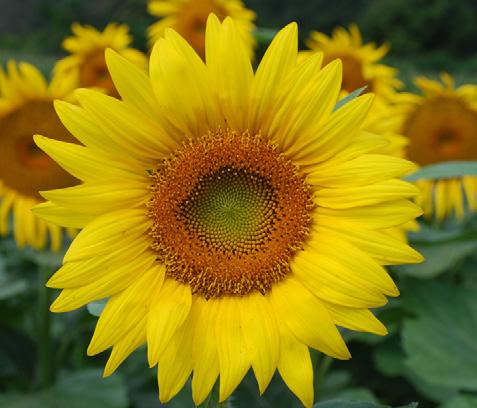

JERSEY GROWN Firewood
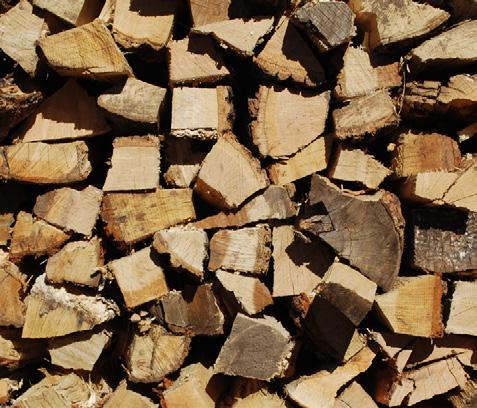

JERSEY GROWN
Annuals & Perennials

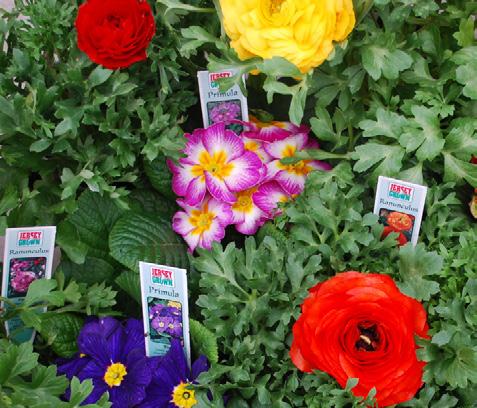


for trees, flowers quality, and Garden soil
shopping for GROWN know the trees, and flowers for quality, pest free, and the Garden climate and soil
When you’re shopping for JERSEY GROWN nursery stock, you know the trees, shrubs, plants and flowers checked for quality, disease, are pest free, and accustomed to the Garden State’s climate and soil conditions.




Made With JERSEY GROWN Wood Birdhouses & Bird Feeders


jerseygrown.nj.gov
jerseygrown.nj.gov
Atlantic County
Phone: 609-625-0056
Bergen County
Phone: 201-336-6780
Burlington County

Phone: 609-265-5050
Camden County
Phone: 856 216 7130
Cape May County
Phone: 609-465-5115
Cumberland County
Phone: 856-451-2800
Essex County
Phone: 973-228-2210
Gloucester County
Phone: 856-224-8040
Hudson County
Phone: 201-915-1399
Hunterdon County
Phone: 908-788-1339
Mercer County
Phone: 609-989-6830
Middlesex County
Phone: 732-398-5260
Monmouth County
Phone: 732-431-7260
Morris County
Phone: 973-285-8300
Ocean County
Phone:732-349-1246
Passaic County Phone: 973-305-5740
Salem County
Phone: 856-769-0090
Somerset County
Phone: 908-526-6293
Sussex County Phone: 973-948-3040
Union County Phone: 908-654-9854
Warren County Phone: 908-475-6505
Spring is a time of renewal and an exciting time to work in the lawn, garden, and ornamental beds. But early fall is the best time to improve a lawn in New Jersey. Especially if you are continuously disappointed by the state of your lawn at the end of the summer, a thoughtful rejuvenation coupled with holistic management can help you produce a better lawn using less irrigation, pesticides, and fertilizer.
Many of the tools and knowledge needed for this ‘low input’ approach were developed by the Rutgers Center for Turfgrass Science and are grown in New Jersey!

Lawn rejuvenation can start by seeding, which is best done in September. The ‘right plant, right place’ approach should be a guiding principle. For most lawns in New Jersey, this means ‘turf type’ tall fescue should be a primary component of seed, with species such as Kentucky bluegrass and fine fescues as minor components. Field trials conducted by Rutgers Cooperative Extension (RCE) specialist Dr. Jim Murphy consistently show lawns of primarily ‘turf type’ tall fescue perform better with little to no irrigation and fertilizer than lawns that are a majority perennial ryegrass and Kentucky bluegrass. There’s a great chance the tall fescue variety you are buying was developed the Rutgers turfgrass breeding program led by Dr. Stacy Bonos.
After more than 60 years of breeding at Rutgers, these modern ‘turf type’ tall fescues are much improved over tall fescues developed for forage. Darker green and with finer leaves, these new varieties are significantly more drought,
Provided by Brian Schilling Directorinsect, and disease-tolerant, resulting in a denser lawn with less inputs. Tall fescues need less than half the nitrogen fertilizer of Kentucky bluegrass and perennial ryegrass, which means better persistence in New Jersey’s sandy soils. For those on more fertile soils, less nitrogen means you can probably ignore mass market retailer recommendations to fertilize several times per year. Increasing the amount of tall fescue in a lawn can be done slowly over several years by sowing seed into the existing lawn during September, or more rapidly by killing off the existing lawn and seeding or sodding. New Jersey has more than 30 sod farms that can help in your selection, and most grow ‘turf type’ tall fescue as the primary crop. Weeds are a common challenge. Whether a plant is a weed is in the eye of the beholder. Crabgrass or sedge species, like false-green kyllinga, are often considered weeds because, aside from their poor aesthetic, they do not persist or grow as well as perennial turfgrasses and thus they decrease functionality of the lawn. Crabgrass is an annual that outcompetes the desirable perennial turfgrass, leaving bare soil behind when it dies in autumn. One of the most common questions asked of Master Gardener helplines is what to spray to control a weed. But if you are spraying the same weeds year after year, another question should be ‘why do I have this weed in the first place?’ Addressing this question will dramatically reduce the need to hand weed or use herbicides. Quite simply, the best defense against weeds is a dense lawn. In lawns with an existing weed
problem, eliminating a weed leaves a void that will be filled by another weed unless you fill the void with a turfgrass plant. For example, research from RCE specialist Dr. Matt Elmore’s program found that controlling the weed falsegreen kyllinga in conjunction with seeding tall fescue was three to four times more effective than just applying herbicide. As the kyllinga was killed by an herbicide, the tall fescue filled the voids and the kyllinga was controlled with only one herbicide application.
Other research consistently finds that recommended strategies to keep a healthy lawn, such as using tall fescue, mowing at the highest recommended height, returning clippings to the lawn, and fertilizing appropriately, dramatically reduce crabgrass and dandelion infestations, resulting in less herbicide use.
So when you think about eliminating a weed, think about what you can do to improve the density of the lawn or reduce conditions like overwatering that cause the weed to thrive in the first place. Maybe it’s time to seed some tall fescue. Or send a soil sample to the Rutgers Soil Testing Lab to make sure there isn’t a soil nutrient deficiency. Take it one step at a time and check out RCE factsheets available on all these topics and more. Lawns are a functional landscape that cover 13% of New Jersey, according to a recent economic survey led by RCE. We can do our part to manage lawns with less inputs by utilizing existing knowledge and techniques. Meanwhile, scientists and Extension educators at Rutgers will continue to explore and spread the word on new available technologies.

Mark Gregory Robson, a seasoned professor and administrator, has been appointed as the inaugural associate vice provost for graduate education for Rutgers University–New Brunswick and the dean of the School of Graduate Studies.
The new role, which began Aug. 1, expands the dean position to encompass new initiatives focused on graduate student success, the graduate student experience and graduate student belonging at the Big Ten university, administrators said.
“I am very excited for this opportunity, my next chapter at Rutgers,” said Robson, adding that he is grateful to Rutgers–New Brunswick Chancellor Francine Conway and Saundra Tomlinson-Clarke, provost and executive vice chancellor for academic affairs, for the opportunity. “I really wanted to do this.”
Robson, a Distinguished Professor and Extension Specialist in plant biology and Board of Governors Distinguished Service Professor in the School of Environmental and Biological Sciences, will lead the Graduate Education and Student Support Initiative, which is part of the Rutgers–New Brunswick Academic Master Plan.
As dean of the School of Graduate Studies, Robson oversees the academic unit that supports graduate education for Rutgers–New Brunswick and Rutgers Biomedical and Health Sciences (RBHS). He will report jointly to Conway and the RBHS Chancellor Brian L. Strom and will work closely with Kathleen Scotto, vice dean of the school.
As associate vice provost, Robson will oversee and advocate for the well-being of Rutgers–New Brunswick graduate students, increase the visibility of graduate education and expand graduate education-related partnerships with the state under the direction of Tomlinson-Clarke.
“The chancellor has a very clear vision on reshaping and reimagining graduate education,” Robson said. “She also has a clear vison on how to better deploy the resources in New Brunswick to benefit all of our students.”
“Mark is deeply committed to bringing out the best in our outstanding graduate students through rigorous, challenging and enriching academic and research opportunities and in developing a culture of graduate student life,” Conway said. “I look forward to seeing him lead our new Graduate Education and Student Support Initiative and finding new ways to increase the impact of graduate education not just for our students but for our partners in research, industry, and the state of New Jersey.”
“Dr. Robson has proven himself time and again as an insightful and effective educator, researcher, and leader,” Tomlinson-Clarke said. “He truly cares about the graduate students with whom he and his colleagues work so closely and is always in search of new ways to improve on providing graduate students with opportunities that will foster their success.”
Robson will lead the academic unit that supports graduate education for Rutgers–New
Brunswick and Rutgers Biomedical and Health Sciences (RBHS). He will report jointly to the Rutgers–New Brunswick Chancellor and the RBHS Chancellor and will work closely with SGS Vice Dean Kathleen Scotto, who will maintain her academic and administrative roles within RBHS as Vice Chancellor for Research and Vice Dean, School of Graduate Studies.
“Research is the underpinning of a great university,” he said. “Question: What is the most essential part of research? Answer: Graduate students. They are the intellectual engine that drives discovery and innovation, no matter the discipline, from history to cell biology from English to engineering, the research happens as part of the graduate mission of the university.”
Robson previously held various leadership roles, including director of the New Jersey Agricultural Experiment Station, associate director of Rutgers Cooperative Extension, executive director of the Environmental and Occupational Health Sciences Institute and assistant dean of student affairs at the School of Public Health. He is an elected fellow of the American Association for the Advancement of Science and a recipient of Rutgers’ Warren I. Susman Award for Excellence in Teaching.
In addition, Robson is one of three United States citizens to receive an Honorary Doctorate from Chulalongkorn University in Bangkok for his work in establishing a Global Environmental Health Center and Graduate Program in Environmental and Occupational Training.
Rutgers University’s Food Innovation Center, the New Jersey Economic Development Authority, along with Middlesex County, held their first annual NJ FoodTech 2023 Conference at the Rutgers College Avenue Student Center in June.
The conference was designed to help promote the growth of New Jersey’s food technology sector by building awareness of its strength in food innovation, leading to business retention, and attraction of business opportunities.
Keynote speaker, Lou Cooperhouse, founder, president & CEO of BlueNalu, presented “Food for Thought: Food Industry Trends.”
“Our inaugural FoodTech event was a tremendous success with an incredible variety of speakers and panels allowing for incredible
network opportunities,” said Nolan Lewin, executive director, Food Innovation Center.
A packed room of food and beverage companies, investors, academics, start-ups, entrepreneurs, and food innovation leaders came together to share their insights, discuss opportunities, and identify future partners.
A variety of experts also presented on industry trends, indoor vertical farming, and the state of the market, which was followed by dynamic panel discussions on innovative sustainability, funding through private equity, food manufacturing survey results and plenty of networking throughout the day.
The next FoodTech event is scheduled for June 2024.
The Food Innovation Center at Rutgers University (FIC) is a unique food business incubator and accelerator that is a unit of the Rutgers New Jersey Agricultural Experiment Station (NJAES). The Center supports established early stage entrepreneurs and existing food companies from concept to commercialization. Combining years of industry expertise and the advanced technologies offered by Rutgers, we provide business, marketing, food safety, product design and scale up expertise within FDA and USDA certified facilities to help companies successfully build and grow their business.










 By Andy Lagana Chef
By Andy Lagana Chef
Hello Gardener News readers. As the summer starts to wind down, I remain happiest cooking outdoors, so I’m sharing a tasty grilled dish that is also easy to prepare. Summer Grilled Pork Chops with Wild Foraged Mushrooms is flavorful and satisfying.
The ingredients needed include four pork chops (bone in or boneless), ¼ cup olive oil, 1 ½ tbsp. brown sugar, 2 tsp. Dijon mustard, 1 ½ tbsp. soy sauce, 1 tsp. lemon zest, 2 tsp. chopped parsley leaves, 2 tsp. chopped thyme leaves, ½ tsp. salt, ½ tsp. pepper and 1 tsp. minced garlic.
To start, place the pork chops in a bowl or gallon size re-sealable plastic bag. In a medium sized bowl, whisk together the olive oil, brown sugar, Dijon mustard, soy sauce, lemon zest, parsley, thyme, salt, pepper and garlic. Pour this marinade over the meat, and marinate it for at least one hour. You can marinate the pork chops for up to eight hours as well.
Preheat your outdoor grill or indoor grill pan to medium heat. Place the pork on the grill, cooking it for 6-8 minutes per side or until a thermometer reads 145 degrees F when inserted into the thickest part. Let the meat rest for 5 minutes. Garnish with additional chopped parsley, if desired.
For the mushroom component of the dish, you will need 2 tbsp. butter, one clove of minced garlic, ½ tsp. smoked paprika, ½ lb. of chicken of the woods mushrooms, cleaned and sliced into strips, plus salt
and pepper to taste.
I am often asked, where does the name ‘chicken of the woods’ come from, and what do they look like? These mushrooms have slightly grooved edges and a pale yellow to orange color. They are medium to large in size, and will catch your eye with their distinctive look. These fungi are found during the late spring through fall in most areas.
There are a couple of different species of these mushrooms, and their size can range from two to 10 inches in diameter. They grow as a broad, fan-shaped mushroom in multiple overlapping layers that resemble the layered shingles of a roof. As they grow, they commonly change color, starting out as a yellowish orange and fading to a pale shade of cantaloupe or white when they mature. These mushrooms are most commonly found on the side of tree trunks, old stumps, or injured roots, and are easy to find given their unique appearance. On a side note, only harvest this mushroom from hardwood trees and not evergreens (fir, hemlock tree, spruce), since eating that variety can result in an allergic reaction, and always get expert advice when harvesting wild mushrooms.
Now that you know a bit more about the mushrooms, next step is to prepare them! In a large sauté pan, heat 1 tbsp. of butter on medium-high heat. Once hot, sauté the garlic until fragrant, about 1-2 minutes. Add the mushrooms, then the smoked paprika, salt and pepper. Stir until the
spices cover the mushroom strips evenly. Cook until the mushrooms have softened, stirring often. Taste and adjust seasonings, pull from heat and add the remaining butter before topping off the pork chops.
A tasty side dish, I like to make a fresh summer garden pepper mix with potatoes and onions. Ingredients needed are ⅓ cup olive oil, six sliced potatoes, and two large red bell peppers - sliced into rings, 1 large sweet onion - peeled and chopped, plus salt and pepper to taste.
Heat the oil in a large frying pan over mediumhigh heat. Add potatoes and fry for 5 minutes.
For frying, I like Idaho or russet potatoes. These are dense and have less moisture, which is key to avoiding a soggy dish. You can also use Yukon gold potatoes, which are all-purpose and can be used for frying. Avoid waxy potatoes like red-skinned, new, or fingerling potatoes.
Add the peppers and onions, and then season with salt and pepper. Cook until potatoes look very soft, turning frequently, for at least 15 minutes. Plate the salad with the pork chops and mushrooms, and you have a great meal.
As always, I like to recommend an appropriate wine with my dishes. In this instance, the mushrooms set up good pairings with earthy wines such as a Pinot Noir based Burgundy. One I like is The Domaine BouquetReserve Pinot Noir 2021. On the palate, it is elegant and balanced with medium body and acidity. At only $20 you cannot beat it. Enjoy!
Plodia interpunctella, better known as the Indian Meal Moth, is normally found where you store your grains. This means that it can move through tiny openings in plastic or cardboard packages in your pantry to feast on cereal, pet food, flour, cornmeal and other stored grains and dried fruit. It can also contaminate contents of larger food storage facilities and grain storage buildings.
The moth is one of the top twelve moth species intercepted at U.S. ports and is closely related to many other highly destructive species that are not native to U.S. agriculture.
This Indian Meal Moth, or its larvae, are commonly intercepted in commodities by other USDA agencies and sent to ARS’ Systematic Entomology Lab, located at the Smithsonian’s National Museum of Natural History, for identification. Once the lab receives the moth’s larvae, ARS researchers compare the external diagnostic characteristics such as hair, and general color, so that it can be distinguished from other closely related non-invasive caterpillars. These diagnostic tools are then provided to other USDA personnel at U.S. ports to distinguish between species.
“This particular research permits the USDA to identify invasive species that may be introduced to the nation,” said ARS researcher Alma Solis. “It also allows us to conduct research, identify, and exclude many other closely-related species that are potentially destructive species to the U.S. economy.”
Tropical climates are a popular habitat for the Indian Meal Moth, but infestations have occurred across the globe, including Antarctica. Even though they are not known to bite or sting, its contamination of food products is detrimental to U.S. agriculture and the economy. Once the moth settles into grain that has a temperature of at least 50 degrees, eggs are laid directly on the food source. A mature female may lay up to 300 eggs at a time before larvae begin to hatch within 14 days.
USDA recommends keeping flour, grains, and other pantry items in thick plastic or glass containers with air-tight lids. Don’t purchase packaged food that looks damaged, and if you suspect that you have an infestation, please contact a licensed pest control company to deter and eliminate the infestation. The Agricultural Research Service is the U.S. Department of Agriculture’s chief scientific in-house research agency. Daily, ARS focuses on solutions to agricultural problems affecting America. Each dollar invested in U.S. agricultural research results in $20 of economic impact.
Some New Jersey municipalities have local ordinances that restrict or prohibit beekeeping activities throughout their town or in certain parts of their town (such as residential areas). Such local beekeeping ordinances have not been allowed in New Jersey since 2015. They are preempted by N.J.S.A. 40:48-1.5, which gives exclusive authority over the regulation of beekeeping and apiary activities to the New Jersey Department of Agriculture (NJDA).
If you have any questions, please contact the NJDA Division of Plant Industry at 609-406-6939.
If you ask anyone what their first job was, I would bet that almost all could quickly recount what type of job they had. And not only would they be able to tell you what type of job they had, but I bet there is a good chance that they would also be able to regale anyone within earshot with tales of forced labor and drudgery that would make a stint in Alcatraz seem like a summer at the Jersey shore.
Just like when people talk about walking to school in two feet of snow, memories of first job experiences tend to get concentrated around a few memorable events or certain highlights that may stand out as being particularly onerous. But, with all of that having been said, many people are able to learn some valuable lessons from their first job which they then remember for the rest of their lives.
Sometimes, when people talk about their first jobs, they have very pleasant memories about their work experiences and certain lessons that they learned. They make statements like “…and that’s when I knew that I wanted to become a
Early fall is the best time to rejuvenate your lawn from summer damage. How does your lawn look at this time of year? Did summer wipe it out or are you looking pretty good?
Let’s look at our options.
As usual, Mother Nature played havoc with your lawn this year. Early spring weather seemed somewhat normal but late spring was quite dry. The temperatures were cooler than normal, and this gave lawns a better chance of surviving with the lack of rainfall. July hit and bam, the hot-humid weather arrived as expected. Lawns quickly started to show signs of stress, and weeds started to show up everywhere! The question was, is this fungus, insects, heat and drought stress or what? You couldn’t keep ahead of it with watering, or perhaps you’ve had enough of your high-water bills, so you just gave up. Perhaps your brown lawn was just going into dormancy. This is a natural stage your lawn goes into in order to survive, much like a bear hibernating in the winter. If your lawn is well established and you followed a sound lawn care program
________,” or “that’s where I learned to love fixing things, or helping people, etc.” Many people have some very positive experiences with their first job which help to influence them throughout their remaining years in the workforce.
Other people however, have very different experiences with their first job. Instead of learning valuable skills and good work habits, people learn what they don’t like to do or how not to act. “After cleaning Port-a-Johns for a summer, I knew I should quit screwing around in school and study.” Or, “I vowed right then and there, that I would never treat an employee of mine the way my first boss treated me.” These are just a couple of
examples of people turning around negative experiences with their first jobs into positive attributes which can later help them during their careers.
Because I grew up on a farm, I was probably exposed to work a little earlier than most. That’s right, my first job was not writing a column for Gardener News, we lived on a farm that produced fruits and vegetables. From a young age, I was always expected to help out with whatever needed to be done. I am not saying that I was forced to do anything too strenuous or out of the ordinary, but if my mother and father were working, then there was no reason that I could not pitch in as well.
When I reached my teens, I would work most days during the summer months. Sure, I played sports and went to camps like most kids, but if there was nothing else going on, we didn’t just sit around or stay in bed. And early in the morning when it was time to pick sweet corn, there weren’t very many other activities to choose from.
Everyone knows that the best sweet corn is the freshest sweet corn, so we would pick corn every day, by hand, rain or shine. Even if the sun was out, you still got soaked because the heavy dew in the corn field would have you drenched in the first five minutes. If we ran out of corn during the day, we would go
over the years, there is a good chance that your lawn will emerge from dormancy when cooler weather and rainfall arrives in fall.
If your lawn has areas of brown grass that do not appear to be recovering at this time of year, it’s time to re-seed these areas. Like painting a house, proper preparation is best for seeding success. First try to establish why these areas died. Like the listing above, what stress caused it to die? Did these grass areas die because of too much shade, too little water, too much traffic, loads of weeds, hard, compacted soil, poor choice of grass seed mixture or what? If you can determine what causes these lawn areas to die, you can
follow a better strategy to hopefully avoid this happening next summer.
Be sure to use high quality grass seed designed for the areas you are seeding, whether it’s a heavy traffic, shady, sunny, or sun and shade area. When re-seeding, first determine if you need any soil amendments. Is the pH too low, is the soil compacted, or is there sitting water that means drainage repair is necessary? Prepare the soil by loosening it a few inches deep, if possible, with a heavy raking or renting a machine to scratch up the soil. A “new seeding-type” lawn food is best to get grass seed off to a good start. This can be put down after final soil grading even with any
pick more. When the weekend came, we didn’t take off and go to the shore, we picked twice as much corn because weekends were busier. But we didn’t have to pick corn all day long. After the corn was picked, we picked peaches.
When school started in September, I was ready to go back. Double sessions of soccer practice were like a walk in the park. A backpack with a few books was a lot lighter than a burlap bag filled with 52 ears of corn. Plus, I didn’t have to get up as early. Oh, the memories… Happy September!
Editor’s Note: Peter Melick is co-owner of Melick’s Town Farm in Oldwick and a 10th-generation New Jersey farmer. Peter is Mayor of Tewksbury Township, Hunterdon County, NJ. He also served as a director for the New Jersey Farm Bureau and is a past president of the New Jersey State Board of Agriculture. Peter has also been featured on NJN, News 12 New Jersey and on the Fox Business Network.
other soil amendments. Apply grass seed evenly by hand or with a spreader and tip your rake upside down to lightly rake the seed into the soil. Do not bury the seed, it should be somewhat visible. Good seed-to-soil contact is best for success. Water these areas, if possible, for about two weeks to hasten germination. If rainfall is occurring, great. Nothing beats a natural rainfall to grow grass. If excessive weeds are a problem, control them first and apply grass seed 4-6 weeks later to allow the weed killer to work. However, if you plan on re-seeding this fall, please do not wait to seed until October or November unless necessary. Grass seed establishes well
with the long fall growing season from September through December. Cut the new grass areas when they reach a height of 3-4 inches. Apply a Winterizing lawn fertilizer between Halloween and November 15th in New Jersey. This is the last day you can apply lawn fertilizers as a consumer in New Jersey, it’s the law. This follow-up feeding will help your lawn to continue to grow through the year.
Speaking of grass seed, the summer harvest is complete in the Pacific Northwest. Some crops are a little short and didn’t yield so well, and some crops have quality issues, but for now it seems like grass seed prices will remain relatively stable into the spring season. Remember, what you “seed” is what you get!
Editor’s Note: Todd Pretz is Vice President of Jonathan Green, a leading supplier of lawn and garden products in the northeast. For more information, please visit: www.jonathangreen.com



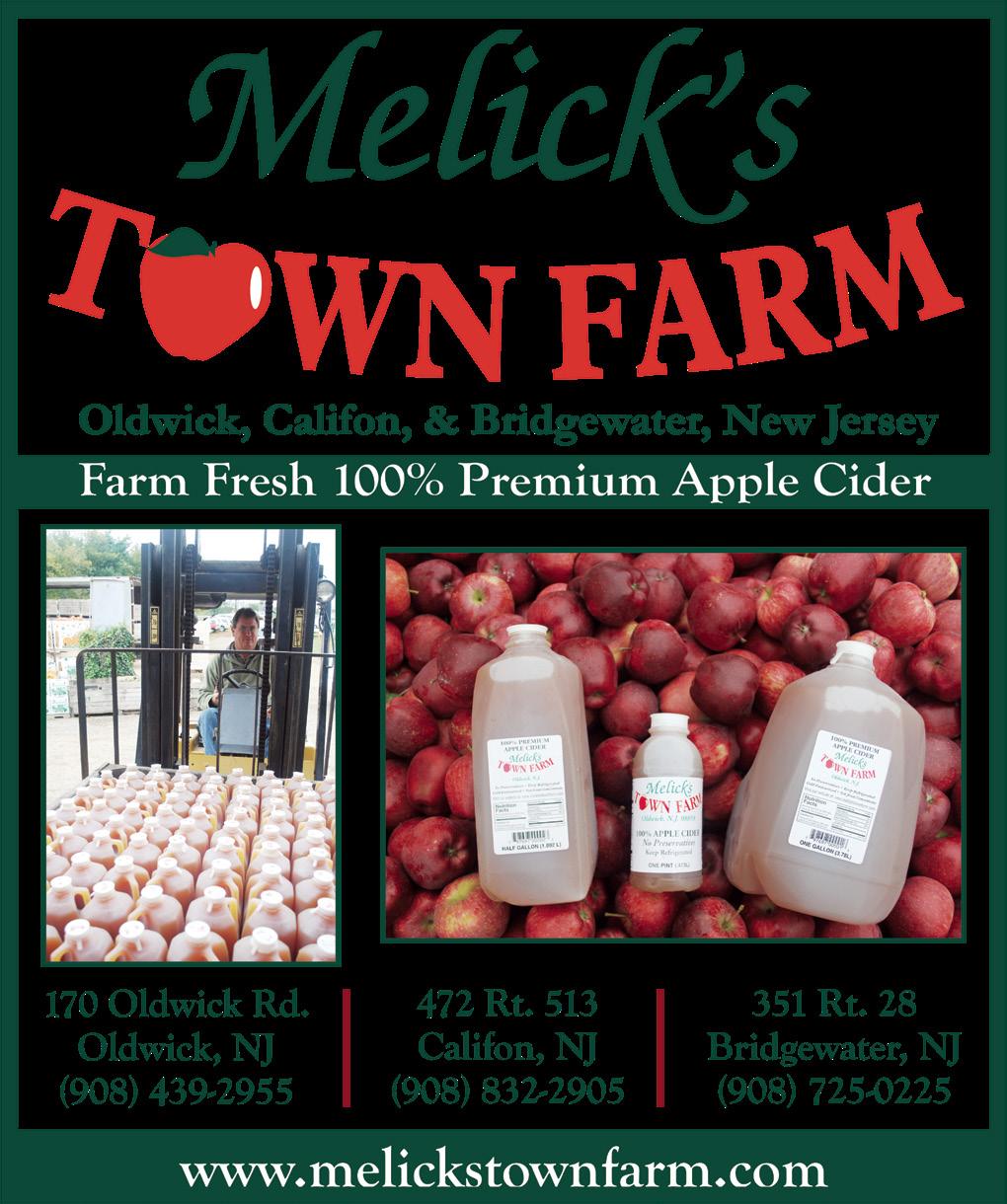
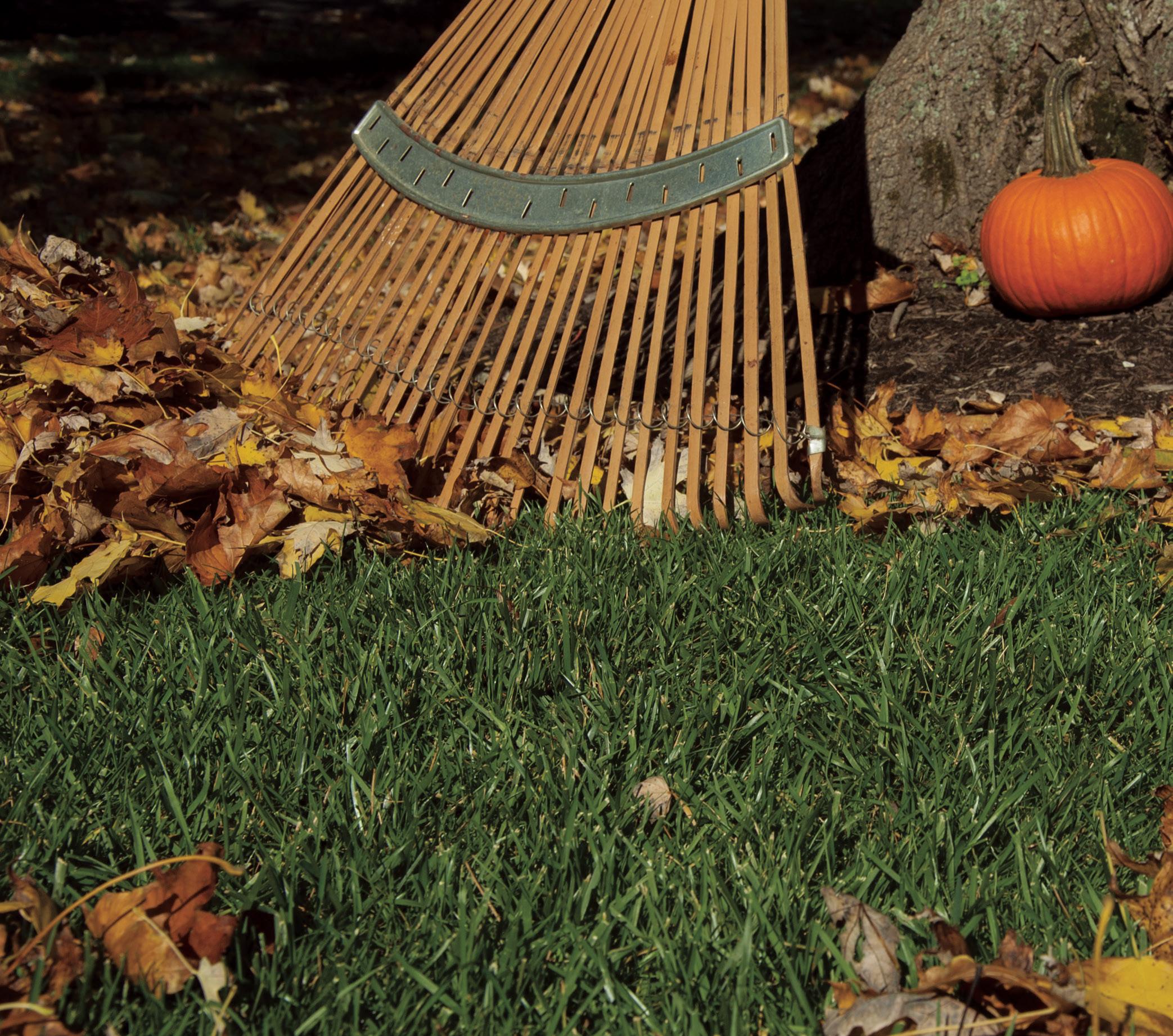

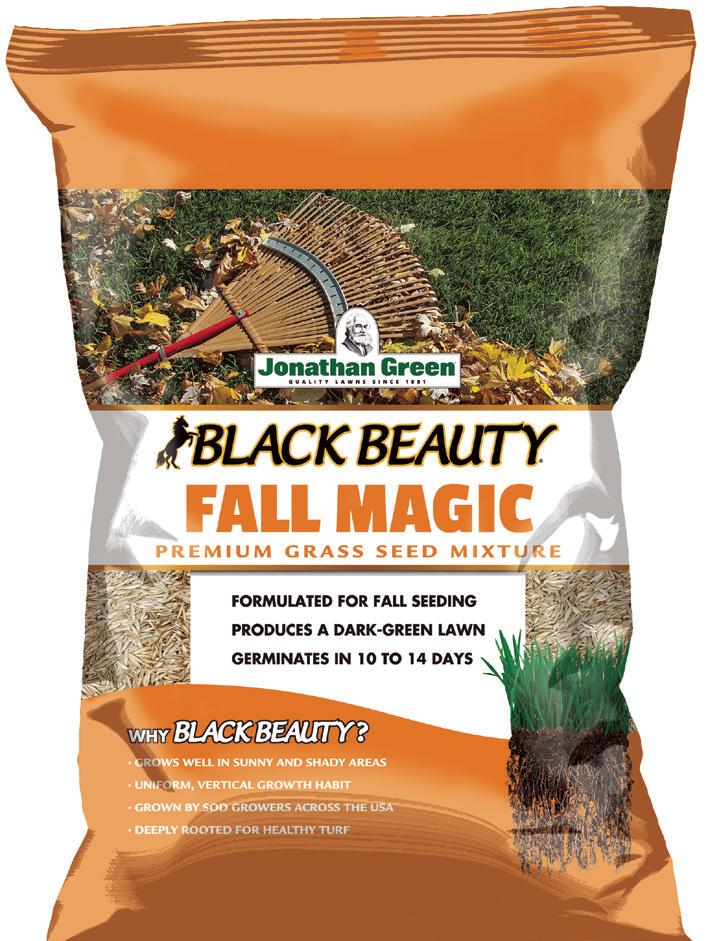



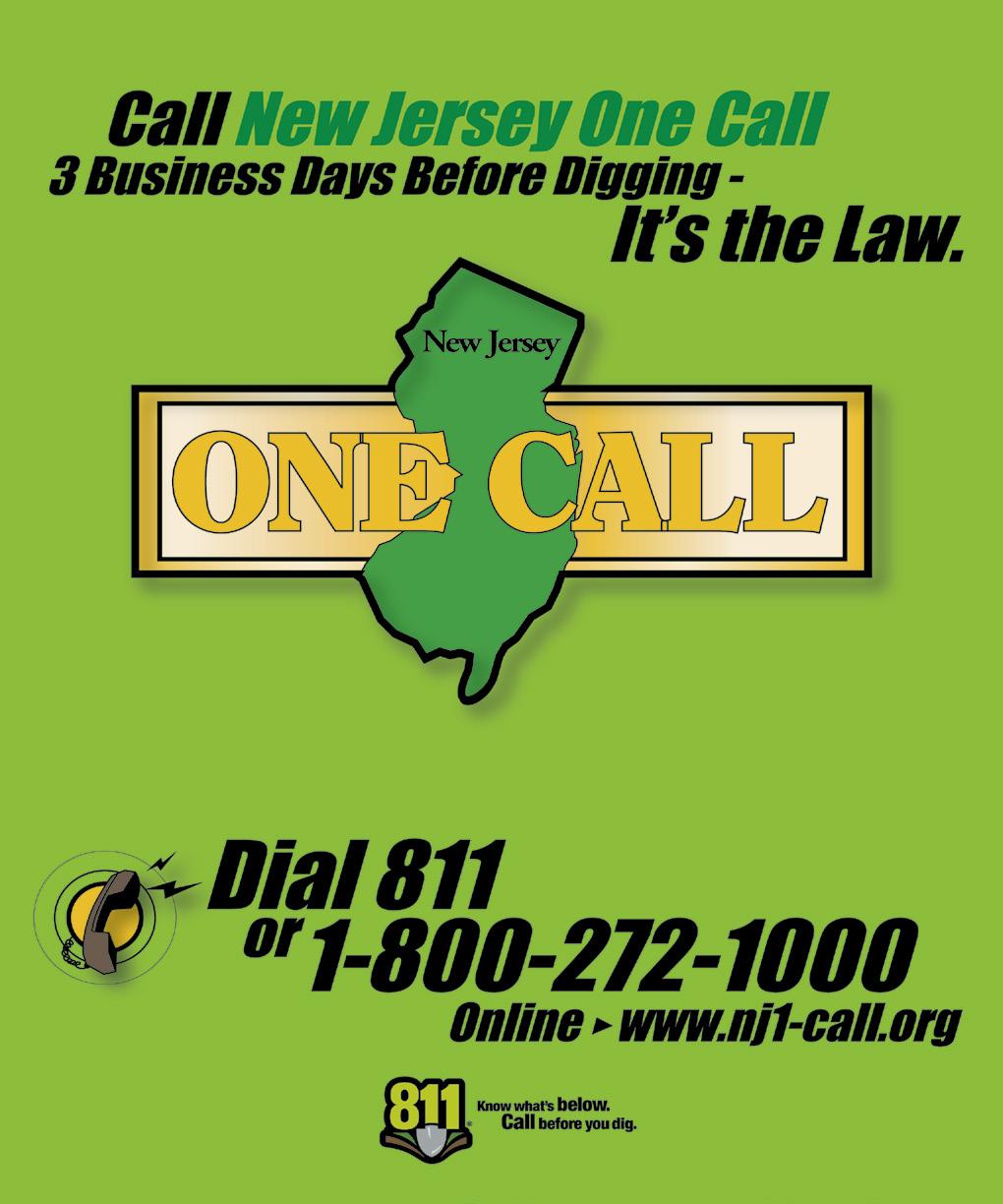




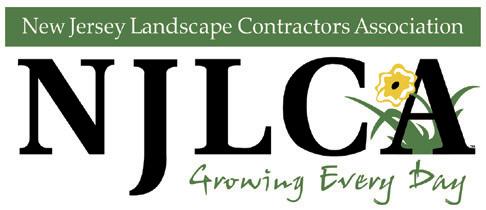


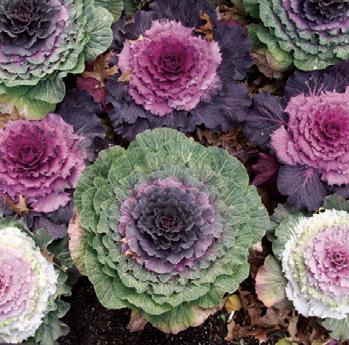
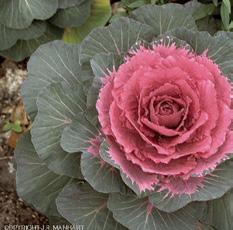
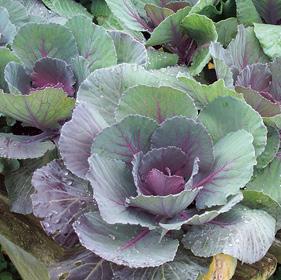











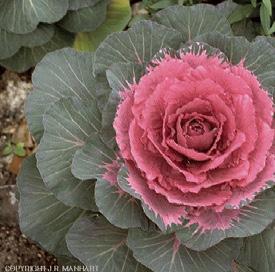
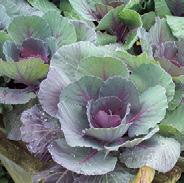



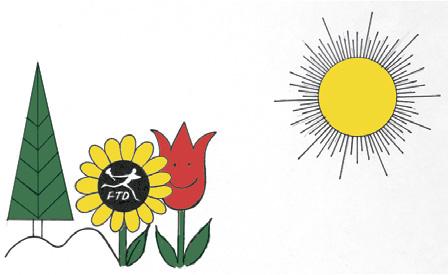

Have you ever wondered why we have such a deep connection to trees? Do any of your childhood memories include trees? Have you ever heard of the “tree of life”?
Many of us are aware of their primary attributes of creating oxygen, food, cooling and insulating effects, their vast by-products and carbon sequestering benefits. As we delve deeper, our awareness increases allowing glimpses of spiritual, psychological and emotional benefits. For many, myself included, we see the significance of our Creator through their uniqueness, beauty, and the role they assume contributing to the natural order. I recommend a great short read Reforesting Faith by Matthew Sleeth, MD.
Quite possibly, photosynthesis is the most important biological function of the planet. Without it life as we know it cannot be sustained.
In our dynamic, everchanging environment, the role of trees is increasingly apparent in its importance. Trees are especially beneficial in suburban and urban areas because they improve air quality and mitigate higher associated temperatures. Currently there are programs and initiatives in place to provide funding assistance for tree planting in such areas.
The golden rule of the right tree in the right
A series of online training modules is now freely available to farmers, engineers, environmental consultants and others interested in designing on-farm systems to remove phosphorus from field runoff or subsurface drainage.
place is very sound advice. Consider the space available, size at maturity, along with the site’s soil conditions in determining tree selection. Choose proven, hardy species to assure their longevity.
It is always a good idea to consult with experienced landscaping professionals and arborists before embarking on a major tree planting. They can offer sound advice and options available to address your goals and decisions.
Teach our children the importance of trees and instill in them a reverence of their attributes and beauty. Encouraging our schools to celebrate Arbor Day, if they aren’t already, is a great starting point. Our children are the tree planters of tomorrow! At the New Jersey Arborists Chapter of the International Society of Arboriculture (NJAISA), we are making it a priority to bring back the importance of Arbor Day. We had a very successful inaugural effort teaming up with the New Jersey Nursery and Landscape Association (NJNLA) in Hamilton on April 28, 2023 for a tree planting. We are actively working toward securing an Arbor Day planting site for 2024.
Consider the current loss of ash trees due to the Emerald Ash borer alone. It’s a huge, devastating loss to our forests. Nature needs our help to offset this loss. Even
in wooded areas, plantings can be very effective in reducing recovery times of regeneration.
I dispute an old adage, “we plant trees of which we will never rest in the shade beneath.” Plant a tree today and return in a few years with a lawn chair!
When is the best time to plant a tree? NOW! When was a better time? Yesterday. Consider planting trees as living memorials of important lifetime events. What a wonderful way of remembrance. Due to the continued maturation of our suburban forests, insect and disease problems, and severe storms, much of my career has been associated with removing trees. At heart I am a “tree hugger.” I always give trees “the benefit of the doubt” and need sound reasons in determining a need for removal, as should all conscientious arborists.
Young, vigorous, growing trees properly planted and pruned will serve you and our communities for decades to come. Be assured you will reap great returns on this growing investment!
What are we waiting for? Get out and plant a tree!
A most worthwhile way to fund research, science and advancements in arboriculture is to join the NJAISA of which I am currently president.
Yours in the trees, Bert.
Editor’s Note: Bert Kuhn is President of the New Jersey Chapter of the International Society of Arboriculture and CO/Owner of Action Tree Service (# NJTC768009), based out of Watchung, NJ. He can be reached at 908-756-4100

Available on the Internet, the modules comprise seven narrated videos, starting with a basic overview of the need for phosphorus removal systems followed by how to design, build and install them, as well as how to properly dispose of or recycle the absorbent materials used to help capture the nutrient in drainage water and runoff.
“These videos explain the basics, and then get into all the details necessary for designing and constructing phosphorus removal structures,” said Chad Penn, an Agricultural Research Service (ARS) agricultural engineer who coordinated the modules’ development. “The goal is to disseminate this conservation practice throughout the country and world”—helping producers strike an optimal balance between crop productivity and environmental stewardship.
Phosphorus is a critical nutrient for optimal plant growth, health and yield, added Penn, with the ARS National Soil Erosion Research Laboratory in West Lafayette, Indiana. However, phosphorus that leaves agricultural fields in runoff or drainage water can accumulate in bodies of surface water, like rivers and lakes, compromising their quality and triggering the growth and decay of algal blooms that can imperil aquatic life and recreational activities.
Management practices and engineered systems that prevent phosphorus loss are vital to maintaining environmental quality.
However, deciding which system is best for a specific farm operation or crop field configuration can be challenging. Fortunately, the modules can help users navigate their way through the process, as well as provide “lessons learned” from the field, said Penn, who has conducted extensive field research on phosphorus removal systems.
The modules include lessons on using the P-Trap (“Phosphorus Transport Reduction”), a software program that Penn and collaborators developed to help users calculate specifications for building the structure based on the data that’s entered, including expected water-flow rates, annual volume, dissolved phosphorus concentration, drainage ditch depth and slope, pipe diameter and target removal goals.
Penn noted that regardless of design, phosphorus removal structures are intended for use on fields with a legacy, or long history, of phosphorus application in fertilizers or animal manures that has resulted in an accumulation of soil phosphorus to concentrations greater than crops need. The structures’ uses are not a replacement for nutrient management practices but rather a complement to them, he added.
In addition to creating the P-Trap software, Penn also designs, installs and field tests phosphorus removal systems in collaboration with Kevin King of ARS’s Soil Drainage Research Unit in Columbus, Ohio; Jay Martin of The Ohio State University, Jessica D’Ambrosio of the Nature Conservancy, Jeremy Freund of Outagamie County Conservation and Santina Wortman of the U.S. Environmental Protection Agency.
The team lent their technical expertise to the American Society of Agronomy (ASA) and the American Society of Agricultural and Biosystems Engineers (ASABE), which developed the training modules with support from USDA’s Natural Resources Conservation Service.
The training manuals can be found at https://fargo.nserl. purdue.edu/p-trap-training/?utm_medium=email&utm_ source=govdelivery
The Agricultural Research Service is the U.S. Department of Agriculture’s chief scientific in-house research agency. Daily, ARS focuses on solutions to agricultural problems affecting America. Each dollar invested in U.S. agricultural research results in $20 of economic impact.
The New Jersey Landscape Contractors Association (NJLCA) just wrapped up our NJ Contractors Showcase and Expo (NJCSE) at the County College of Morris’ Landscape and Horticultural Technology building, and we are excited to report that it was a resounding success! There were 60 vendor booths, 15 demonstration areas, and over 400 attendees at the first of this kind event at an educational institution. I am also proud to announce that NJCSE has a waiting list for vendors.
The inception of this extraordinary trade show started with a vision to give members of the industry the opportunity to actually test drive and interact with the latest equipment, as well as get up close and personal with their suppliers. Recognizing the need for a specialized event where industry leaders could display their latest innovations, we embarked on this journey to create a unique event that would redefine the trade show landscape in the NJ metropolitan area.
To build anticipation and excitement, NJLCA planned a robust pre-event marketing strategy, utilizing social media, email campaigns, and collaborations with industry influencers to generate buzz and increase registrations. This proactive approach significantly contributed to the success of NJCSE. The association drew in the owners and decisionmakers to test the wares and learn about the services available to them. Attendees ranged from landscape

designers, construction, maintenance, municipalities, irrigation, and all other outdoor contractors in the industry.
The show’s success was also due in large part to the NJLCA’s supporters, exhibitors, and sponsors. Without the support of our vendors, we would not have been nearly as effective, and we thank them for that. We hope that the attendees follow up with these face-to-face meetings and secure their next equipment and service purchases through these vendors.
The demo day and trade show highlighted an impressive array of innovative landscape products and cutting-edge technologies, providing attendees with a glimpse into the future of outdoor construction and maintenance. The teams of experts on-site eagerly shared their knowledge and expertise, building connections with potential clients, partners, and industry players.
The weather was beautiful, the food was great, and the equipment
was humming! From front loaders to mowers, weed eaters to leaf blowers, gas-powered to batterypowered, all the major players were out in full force. Other vendors included nurseries, educators, paver manufacturers, insurance providers, lighting exhibits, agronomics, deer control services, multi-toll machines, landscape materials suppliers, communications, irrigation supplies, trucks, employee services, and more.
NJLCA is thrilled with the overwhelming response we received at this year’s NJCSE and is excited for what is next! The positive feedback and interest in our vendor’s products and services reinforce our dedication to delivering landscaping solutions that enhance our attendee’s ability to build amazing outdoor spaces. We thank all our vendors and attendees for coming out to see this one-day industry marketplace and demonstration.
Finally, I must give kudos to Pat Barckett, from Bobcat of North
Jersey, Tom Castronovo from Gardener News, Kevin Dulio from Native Fields Landscaping, and the NJLCA Board, who all went above and beyond to help this event come to fruition. These folks spent many hours preparing the property to turn it into a beautiful and useful site for the NJCSE event. Furthermore, I thank my administrative assistant Maria Albuquerque, and her granddaughter, for all their hard work. It is always so exciting to see an idea become a reality and I can’t wait to see continued success at next year’s event!
Next up is the NJLCA Golf Challenge, being held at Crystal Springs Resort in Hamburg, NJ. The Golf Challenge will be here for the second year. This time we will be playing at Wild Turkey.
The NJLCA Golf Challenge (as well as the NJCSE) support NJLCA’s Education Fund, which provides scholarships for members and their immediate families, as well as others seeking higher education
in the landscape, horticultural, and outdoor living industries. The next NJLCA member meeting will be held at Hionis Greenhouses in Whitehouse Station on September 7.
Editor’s Note: Gail Woolcott is the Executive Director for the New Jersey Landscape Contractors Association. Gail received the New York State Turf & Landscape Association 2022 “Person of the Year” award on December 1, 2022. Gail also received a proclamation from the Westchester County, New York Board of Legislators proclaiming December 1, 2022 as “Gail Woolcott Day” in Westchester County. Gail has also been presented with a community service award from the Borough of Fairview, New Jersey for her assistance in leading the 9-11 Memorial Park project and the Legislative Champion of the Year award from the Federation of Employers and Workers of America. She can be reached at 201-703-3600 or by emailing gwoolcott@ njlca.org.
Out of about 2,000 native NJ wildflowers, our Department of Environmental Protection lists 850 as species that are endangered or of concern (May, 2022). With almost 50% of our wildflowers in danger of local extinction (extirpation), immediate action is necessary to halt and reverse this trend. You might wonder if you personally can do something about this problem and thankfully you can easily make a difference.
Purple giant hyssop, Agastache scrophulariifolia, is one of these rare plants. It is listed as S2 (imperiled with 6-20 sightings in NJ). While 20 locations may not seem too bad, the survival of this plant in the wild is not certain. Often, known locations have not been visited for years, and when people go to visit, the habitat has often changed or is even under six inches of
concrete.
A concrete example of disappearing wildflowers was obvious from our visit to Northern NJ, where we tried to find several rare plants at previously known locations. We looked for bunchberry (S1, critically imperiled), threetoothed cinquefoil (S1), 3-leaf false Solomon’s seal (S1), wild lupine (S2, imperiled), shining ladies’ tresses (S2), painted trillium (S2), and wild calla (S3, rare). Our results from pretty careful searching over several days showed: no wild lupine, no shining ladies’ tresses (although it was reported there last year), one bunchberry flower, one 3-leaf false Solomon’s seal flower, five painted trillium flowers, and dozens of threetoothed cinquefoil and wild calla flowers. Although it may have been a bad year, two out of seven species were missing in action, two out of seven were struggling to survive, and three out of seven seemed to be surviving
or thriving.
These numbers don’t look very promising and they probably are the rule rather than an exception. I also know of a heavily visited bog in Southern NJ which now has a few orchids while a few years ago it had hundreds of one type of orchid. Several years ago, it had three species of orchids. In addition, even a short look at the New York Metropolitan Flora project from the Brooklyn Botanic Gardens will show most plant populations shrinking 30-60% over the last 30 years. A reasonable guess is that we will lose 50% of our native plant species in NJ within 20 -30 years. The DEP already confirms the loss (extirpation) of over 350 species in our NJ native flora. That is the bad news! The good news is that over 100 of the species reported to be rare in the wild in NJ are actually common in garden centers or in native plant nurseries. Examples of
these are: purple giant hyssop, yellow giant hyssop, Canada anemone, pawpaw, paper birch, southern boltonia, cat-tail sedge, redbud, squirrel-corn, Goldie’s fern, rattlesnake master, oak fern, twinleaf, butternut, northern blazing star, blazing star, coral honeysuckle, Virginia bluebells, beebalm, wild blue phlox, red pine, red spruce, loblolly pine, Greek-valerian, Jacob’s ladder, dwarf azalea, rhodora, orange coneflower, and arborvitae. These are all striking, easy to grow, and readily available native plants. In fact, Canada anemone may become too rambunctious and pawpaw may start to produce annoying runners and shoots in multiple locations. How many of these plants ever became rare in NJ is a mystery to me.
To save the world, or to be more precise to save a small corner of the world, simply take the first ten plants from this list which appeal to you and grow them
and spread them around to your friends. This is quite an easy project to start. For example, order a package of giant purple hyssop or yellow hyssop seeds for $3-$5 on the internet. Grow these up in a semi-shady spot in your yard in good garden soil. In two or three years, you should be able to share with others. With some effort from likeminded people, these plants will no longer be rare in NJ and we can make plans to carefully restore them in the wild.
How we should restore plants is somewhat controversial, however. I believe we should follow the lead of animal conservationists who have many successful restoration projects.
Editor’s Note: Hubert Ling is Horticultural Co-Chair of the Native Plant Society of New Jersey. He can be reached at milhubling@ verizon.net.
GARDEN CENTER AND FARM MARKET
96 River Road Montville, NJ 07045 973-263-8814
SERVING YOUR GARDENING NEEDS FOR 6 GENERATIONS
OUR EXPERIENCED STAFF CAN ANSWER YOUR GARDENING QUESTIONS AND PROVIDE GROWING TIPS
Jersey Fresh Produce at Condurso’s


Corn, Tomatoes, Squash and More Peaches are ready, Yellow and White
Candy You can buy them by the box, basket or pound
Fresh Baked Pies, Donuts, Cookies Local Honey
Homemade Ice Cream to top off your Favorite Desserts
Annuals Perennials Shrubs
Top Soil Mulch Stone, Bagged and Bulk
We Fill Your Own Propane Tank (No Swapping)
We Also Fill RV’s and Larger Tanks 7 Days a Week
Mon. - Sat. 7-6
Sunday 7-5
One dimension we often neglect when working with annuals is the vertical dimension – namely height. This becomes even more apparent when considering the topic of vines.
Vines are great for softening architecture or clambering up vertical structures in a garden. Unfortunately, most woody vines only bloom for a couple of weeks, compared to annual vines that bloom heavily for several months. Plus, annual vines can easily be relocated to new locations from one year to the next. One very colorful yet overlooked vine is the Spanish Flag or Firecracker Vine, botanically known as Ipomea lobata.
Ipomea is a member of the Convolvulaceae or Morning Glory Family, and with over 600 species native to tropical and subtropical regions, it is also the largest member of the family. Ipomea lobata is native to SW Mexico. The genus name was penned in 1753 by the Swedish botanist Carl Linnaeus (17071778). The name comes from the Greek Ips or Ipós meaning worm and Hómoios, to resemble, describing how the twining plants resemble the movements or appearance of a worm. Of
As a Family Owned Business for almost 100 years, we’re Dedicated to Providing the Personal Service and Expertise that’s too often Missing in the Big Box Stores
course, with over 600 species there are bound to be several that initially fail to be recognized as a species of Ipomea and such was the fate of Firecracker Vine!
In 1824, the Mexican botanist Vicente de Cervantes (1755-1829) initially described this twining plant, naming it Mina lobata
The genus honors a leader in Mexico’s War for Independence, Don Francisco Xavier Mina, while the species is from the Latin meaning ‘with lobes’, describing the three prominent lobes of the foliage. Come 1909, it was renamed Quamoclit lobata by the American botanist Homer Doliver House (1878-1949). The origins of quamoclit are rather vague, but it is possibly from the Greek for Kidney Bean, referencing the curved shape of the cotyledons. Shortly thereafter
in 1919, the Swiss botanist Albert Thellung (1881-1928) finally provided the rightful name of Ipomea lobata
To add a twist of confusion for the devout gardener, all three botanical names are currently used by retailers! Not to worry though – one picture of the vine in full bloom will provide sufficient ‘craving’ to offset any confusion over the name! Flowers appear on a 6" long, onesided raceme that is forked at the base, giving the appearance of two separate racemes! A raceme features a stem along which the flowers arise equidistantly, with the lowest flowers on the stem maturing first. As the raceme lengthens, small bright red flowers continue to appear at the tip, which enlarge and transition to golden yellow and finally mature
to white at the racemes’ base. All told, each individual raceme presents 12-15 flowers. The brilliant red and yellow flowers bear a resemblance to the colors of the Spanish flag, inspiring the common name. The flower racemes appear from late June to frost and are much admired by hummingbirds, butterflies and numerous other pollinators.
The clockwise twining stems are rapid growers, reaching 18-20' tall by August. The dark green foliage provides an attractive bold texture, with each leaf measuring 2-6" long and wide. It is also a nice backdrop for the flower display. The flower racemes project outward and gently upwards from the stems, ensuring a very showy display.
Ipomea lobata is fun worked up into a small tree with an open
crown or up tripods or poles placed in a garden needing hot colors. Plants thrive best in full sun in moist yet well-drained soils. Seeds should be started indoors 4-6 weeks prior to the last frost-free date or directly sown in the soil come late May or early June. The plants resent root disturbance, so if they are started indoors, it is important to handle the plant gently while planting!
Ipomea is a well-known genus among gardeners for the trailing dark purple or chartreuse foliaged forms of Ipomea batatas or Sweet Potato. Unfortunately, adding the element of height with a climbing form is a notion many gardeners have yet to consider. Almost 200 years since Cervantes initially described the plant, the time has finally come for more gardens to feature a vertical explosion of color with Firecracker Vines!
Editor’s Note: Bruce Crawford is a lover of plants since birth, is the Manager of Horticulture for the Morris County Parks Commission, and a Past President of the Garden State Gardens Consortium. He can be reached at BCrawford@ morrisparks.net


Governor Phil Murphy signed S1727/A3393, which designates franklinite as the official mineral of the State of New Jersey. Sponsored by Senators Steven Oroho and Edward Durr and Assemblymen Parker Space, Hal Wirths, and Kevin J. Rooney, the legislation recognizes a source of New Jersey pride and a crucial contributor to the state’s industrial history.
“By designating franklinite as the official State Mineral, we celebrate yet another quintessentially Jersey piece of history,” said Governor Murphy. “Franklinite quite literally helped build our modernizing nation’s foundation while fueling the growth of the railroad industry and New Jersey’s local economies. This legislation will ensure that franklinite’s enduring economic and cultural legacy is remembered not just in Sussex County, but across the Garden State.”
“The Murphy Administration’s recognition of franklinite as the New Jersey State Mineral underscores the worldwide renown and critical role that franklinite has had in the industrial history of our state,” said New Jersey State Geologist Jeff Hoffman. “The largest deposit of franklinite in the world is in the ore bodies that supplied the Franklin Mine and Sterling Hill Mine in Sussex County. Zinc from these mines supported many uses and was crucial to early industrial development in New Jersey. Moreover, these mines were the largest supplier of zinc during World War II, providing the raw materials needed for weapons that helped protect our country and troops.”
“Franklinite represents an important part of New Jersey’s history for the role it played in helping to industrialize our state,” said Senator Steven Oroho. “Found exclusively in the United States in the communities of Franklin and Ogdensburg, franklinite is a critical link to our state’s mineral mining heritage and its designation as New Jersey’s official state mineral is most appropriate.”
“Franklinite is a mineral unique to New Jersey and was a key component to the modernization of our state during the 19th and 20th centuries,” said Senator Edward Durr. “With the signing of this bill, New Jersey will recognize the tremendous impact this mineral has had on the construction of water, electric, and other crucial infrastructure we rely on every day.”
“Franklinite is as unique to New Jersey as the Pine Barrens are, and was the driving force behind the state’s thriving mining industry,” said Assemblyman Parker Space. “The discovery and mining of this rare ore built Franklin. Its importance can’t be overstated.”
“There are many people to thank who helped get this bill to the Governor’s desk,” said Assemblyman Hal Wirths. “Jeff Osowski of the Sterling Hill Mining Museum built the momentum for this years ago; Bill Truran took a keen interest in organizing support when he became
• Alva Agee: 1916-1925
• William B. Duryee: 1925-1938
the Sussex County Historian in 2019; and all the students in Northern New Jersey who kept writing letters to get this bill through the legislative process and now signed into law. This is a great day for everyone involved.”
“Franklinite, an ore only found in New Jersey, built a town and was a driving force in our state economy while benefitting millions around the globe,” said Assemblyman Kevin J. Rooney. “It’s fitting to name it the official state mineral.”
“The Sterling Hill Mining Museum has been working for years to gain recognition for franklinite as the New Jersey State Mineral. It was one of the driving forces in the economic development of Sussex County in the 1800s,” said William Kroth, President and Executive Director of the Sterling Hill Mining Museum, Inc. “After the franklinite ore was processed to remove the zinc, it then became the source of high manganese steel, which was vital for the railroad industry. Franklinite is found nowhere else in the world in as great a quantity as in New Jersey. The Sterling Hill Mining Museum, a 501(c)(3) educational institution, is looking forward to building on this recognition in its outreach to students.”
Acting Governor Nicholas P. Scutari signed A-2271/S-3442, which designates cranberry juice as State juice. Sponsored by Murphy, McKnight/ Madden, Singleton.
The bill was inspired by the advocacy of the fourth grade classes in Cinnaminson township schools in New Jersey. This has been an ongoing effort that started in the 2019-20 school year.
The state Senate unanimously approved the bill on Monday, May 22nd, designating cranberry as the state juice. With the Assembly having previously approved the measure.
New Jersey is the third largest cranberry producing state in the United States. The history of cranberries predates the arrival of the first European settlers in the Western Hemisphere as cranberries were a staple of the diets of Native-Americans. In New Jersey, commercial cranberry farming began in 1835 in a bog in Burlington County and New Jersey is now the third largest cranberry producing state in the United States. In 1917, Elizabeth Lee of New Jersey was the first person to create cranberry sauce from the berries and later joined forces with other farmers to start the company that became known as Ocean Spray.
Research indicates that cranberry juice is full of nutrients that may have significant health benefits. New Jersey does not have a State beverage and it is fitting and proper to formally recognize the significance of cranberries to the history and culture of our State and its people by designating cranberry juice as the State beverage.
• Willard H. Allen: 1938-1956
• Phillip Alampi: 1956-1982
• Arthur R. Brown, Jr.: 1982-2002
• Charles M. Kuperus: 2002-2008
• Douglas H. Fisher: 2009-2023
The New Jersey State Board of Agriculture is currently in the process of selecting the eighth Secretary of Agriculture in New Jersey’s history with the retirement of Douglas H. Fisher onJuly 1.
Do you know someone in the “Outdoor Living Industry” whose contributions deserve recognition?
Gardener News is accepting nominations for its 2023 Person of the Year Award.
Nominee must be from the agricultural, gardening, garden center, landscape or nursery industries who best epitomizes concern for, involvement in, and dedication to those pursuits. Or a person who performs exemplary outstanding service to the environment and/or outdoor living industry.
The deadline for receiving nominations for 2023 is November 1, 2023.
Gardener News annually bestows our “Person of the Year” Award in our January edition. Nominations can be submitted at GardenerNews.com under the “Awards” link on the navigation bar.
About 20 years ago, Martha Stewart had a picture of a bouquet of hydrangeas on the cover of Martha Stewart Living. From that day forward, there has been an amazing global renaissance of hydrangeas and the excitement for them only continues, so much so, that it is now the #1 shrub sold worldwide.
Over the last two decades, there has been an avalanche of new introductions, probably numbering close to 500! All types and species of hydrangeas have become popularized and are now used widely by mainstream gardeners.
Following are some of the newest hydrangeas, and others that have stood the test of time. They represent some of the “best of the best” hydrangeas on the market today.
Hydrangea macrophylla Endless Summer® transformed the hydrangea market. This was the first of the mop-head hydrangeas to bloom on “new wood” which meant it would flower regardless of pruning and/or damage from the winter. Last year, in the Endless Summer® series Pop Star® was introduced for its profusion of blue flowers. Hydrangea macrophylla Kimono™ has dark leaves and bicolor flowers with cerise outer petals with a white center. There was a lot of excitement at CULTIVATE this year

from an introduction from Bailey’s Nursery, Hydrangea macrophylla Eclipse® which has flowers very similar to Kimono™, but has nearly black foliage which makes for a stunning contrast.
More diminutive than the Hydrangea macrophylla is the mountain hydrangea, Hydrangea serrata. I grow Hydrangea serrata Tiny Tuff Stuff™ which only reaches three feet tall and is covered in flat-topped, blue, lace-cap flowers in July. Let’s Dance Can Do® is a hybrid between H. macrophylla and H. serrata that has a diminutive stature and is covered with an abundance of dome-shaped flowers that will be pink or blue depending on the pH of the soil.
Hydrangea arborescens
‘Annabelle’ has stood the test of time and remains one of the very best of the native smooth hydrangea cultivars. In mid to late July, it is completely covered with an abundance of large ball-shaped white flowers. Incrediball® has
even larger flowers and stronger stems so it does not splay open in the middle of summer. Tom Ranney, the famed plant hybridizer from North Carolina State University, has produced the Invincibelle ® series which has varying degrees of flowers from soft pink to burgundy shades, including Invincibelle® ‘Spirit’, ‘Ruby’, ‘Blush’, ‘Garnetta’, ‘Mauvette’ and ‘Wee White’ that is very small with white flowers. ‘Haas Halo’ is a large flattopped selection of Hydrangea arborescens which has a great abundance of fertile flowers making it a pollinator magnet.
For decades the peegee hydrangea, Hydrangea paniculata ‘Grandiflora’ was a popular large shrub to small tree and is still a ubiquitous plant in most East Coast cemeteries. Today, Hydrangea paniculate, like all of the other aforementioned hydrangeas, has had an amazing renaissance and is the focus of many breeding programs. I still favor ‘Limelight’ for its
mid-summer cones of lime green flowers that turn ivory white and fade back to lime green. Little Lime® only reaches four feet tall. Tiny Quick Fire® is also small in stature and the flowers mature to a red-pink. Puffer Fish® has very heavy flowering and large, broad white flowers. Pinky Winky Prime™ has flowers that emerge white and turn to hot pink.
Finally, the oakleaf hydrangeas, Hydrangea quercifolia also continue to grow in popularity. Like most hydrangeas, growing them in full sun will result in the best flowering. However, in the native habitats in the southeastern U.S., they can also thrive in considerable shade. ‘Snow Queen’ is a cultivar that has been around for decades with upright, white, cone-like flowers that sit atop the oak-like leaves. ‘Snowflake’ has double flowers which cause the flowers to be so heavy they become pendant. Gatsby Pink® and ‘Amethyst’ both
have flowers that mature to pink. The U. S. National Arboretum introduced ‘Ruby Slippers’ which only reaches four to five feet tall and also has flowers that fade to white. The global excitement and interest in hydrangeas will only continue. Every year there will be new and exciting hydrangeas to try in our gardens.
Editor’s Note: Andrew Bunting is Vice President of Horticulture for the Pennsylvania Horticultural Society. He is one of the most recognized horticulturists in the Philadelphia, Pa., region and a highly regarded colleague in the world of professional horticulture. Bunting has amassed a plethora of awards, including the American Public Gardens Association Professional Citation, Chanticleer Scholarship in Professional Development, Delaware Center for Horticulture’s Marion Marsh Award, and the Certificate of Merit from the Pennsylvania Horticultural Society. In addition, Bunting has lectured extensively throughout North America and Europe, and participated in plant expeditions throughout Asia and Africa. Learn more at https://phsonline.org/team/ andrew-bunting
The Northeastern Association of State Departments of Agriculture convenes the following 10 states: Connecticut, Delaware, Maine, Massachusetts, New Hampshire, New Jersey, New York, Pennsylvania, Rhode Island, and Vermont.
More than 40 Delaware potbellied pig owners have applied for an Invasive Animal Permit since the Delaware Department of Agriculture (DDA) notified residents last week of the new regulation, 3 DE Admin. Code 906 Possession, Sale, or Exhibition of Non-Native and Invasive Animal Species, listing potbellied pigs and feral swine of any kind as invasive. One of the biggest concerns for these owners is the visible identification ear tag their animals must have to comply with the regulation.
“We know for many owners these pigs are their pets, many living in their homes like a dog or cat would, so the thought of an ear tag used for pigs on a farm is hard to handle,” said State Veterinarian Dr. Karen Lopez. “Based upon the feedback, we are providing the option for owners to have their pigs microchipped by their licensed veterinarian. However, if they are not microchipped yet, owners must call their veterinarian immediately to get on the schedule.”
Despite regulations stating that the animal must have visible identification, owners will not be in violation if they choose to microchip their animal. Owners must schedule an appointment with a licensed veterinarian to have the pig microchipped before their on-site premise inspection. The licensed veterinarian must provide the owner with a copy of the universal microchip number and proof they microchipped the animal to submit to DDA Poultry and Animal Health staff at the on-site inspection.
At the time of inspection, the invasive species owner will be made aware and sign a liability waiver to affirm that there is an understanding of the fact that invasive species that are microchipped are at greater risk of being euthanized if they do not report the escape of their animal within 12 hours of it leaving their premises. Owners who have reported their invasive animal at-large will have 72 hours to assist DDA in recapturing their animal.
“There are people out there who are accusing us of wanting just to kill these pigs, which is not the goal of this regulation. We now have a feral swine population of about 300 pigs, which stemmed from the abandonment and escape of potbellied pigs and potbellied-cross pigs,” said Lopez. “By having a permit process for these invasive animals, we want owners to take the initiative to ensure their pigs have the proper housing and secure fencing so they can’t escape, that they spay and neuter their animals so we can stop unwanted litters and behavioral problems and that if they escape, the owner reports it to us so we can work with them to recapture their animals.”
An Invasive Animal Permit is required for potbellied pigs, or any pig breed advertised as micro pigs, teacup pigs, mini pigs, pocket pigs, or pygmy pigs, or a potbelly cross including pigs with genetics from American Guinea Hogs, Julianas, KuneKune, and Meishan.
For more information regarding this new regulation and to obtain an application for an Invasive Animal Permit, visit https://de.gov/ invasiveanimals.
The Vermont Agency of Agriculture, Food and Markets (VAAFM) is pleased to announce that the Farm Service Agency (FSA) of the USDA has awarded $577,325 to the State of Vermont as a part of the Organic Certification Cost Share Program. The application is now open for certified operations to apply for these funds.
Certified organic operations may receive reimbursement of up to 75% of their direct certification costs paid between October 1 and September 30 annually, not to exceed $750 per certification scope. There are up to four eligible certification scopes (crops, livestock, wild crops, and handling), which must be individually inspected for organic certification to be eligible for reimbursement. Many organic producers and processors have suffered losses during this year’s frost and flooding events. This cost share program will help many of those with recovery and viability for the future.
Reimbursable costs include application fees; inspection fees, including travel costs and per diem for organic inspectors; USDA organic certification costs; user fees/sale assessments; and postage. Funds are available on a first come, first served basis.
Application deadline is November 1, 2023.
To learn more and apply, please visit: https://agriculture.vermont.gov/grants/ organiccostshare
Maine residents can participate in the Obsolete Pesticide Collection Program, a joint initiative by the Maine Department of Agriculture, Conservation and Forestry’s Board of Pesticides Control (BPC) and the Maine Department of Environmental Protection. The program aims to safeguard Maine’s natural resources and prevent agricultural pollution by promoting the safe and proper disposal of outdated, unused, or unwanted pesticides.
Homeowners and family-owned farms are encouraged to take advantage of this opportunity by bringing their unwanted pesticides, including herbicides, insecticides, rodenticides, fungicides, disinfectants, and similar products used in agricultural production or around the home, to collection sites in Presque Isle, Bangor, Augusta, and Portland.
The next obsolete pesticide collection days will be held during October 2023, with one-day events in Presque Isle, Bangor, Augusta, and Portland. Pre-registration is required by September 29 to participate; drop-ins are not permitted. The program only accepts pesticides and spray adjuvants. Registration instructions and forms can be found on the program webpage: thinkfirstspraylast.org. Each registration must be from the person currently possessing the pesticides, and materials collected on behalf of others will not be accepted. More details, including drop-off locations and the obsolete pesticides inventory form, will be provided soon on the BPC website at thinkfirstspraylast. org.
Agriculture Secretary Russell Redding invites Pennsylvania farmers to apply for $13 million in tax credits available to support their efforts to improve soil health and water quality. Tax credits through Pennsylvania’s innovative conservation financing program, Resource Enhancement and Protection (REAP), can be combined with other state funding, including the Agriculture Conservation Assistance Program, and Conservation Excellence Grants, as well as federal funding through programs like the Environmental Quality Incentives to help pay for on-farm enhancements that protect the environment and boost farm sustainability.
“Pennsylvania farmers are investing heavily in cleaner water and productive soil to sustain us in the future,” said Agriculture Secretary Russell Redding. “REAP tax credits are just one of many ways Pennsylvania invests in our farmers’ efforts to grow a sustainable farm economy to feed our future.”
On August 7, the department will begin accepting applications for REAP tax credits from agricultural producers who implement best management practices or purchase equipment to reduce nutrient and sediment runoff, enhance soil health and improve the quality of Pennsylvania’s waterways.
Farmers may receive REAP tax credits of 50 to 75 percent of a project’s eligible out-of-pocket costs. Farmers whose operation is in a watershed with an EPA-mandated Total Maximum Daily Load (TMDL) can receive REAP tax credits of 90 percent of out-of-pocket costs for some projects.
REAP applications are reviewed on a first-come, firstserved basis. Baseline eligibility includes compliance with the PA Clean Streams Law and the Pennsylvania Nutrient and Odor Management Law.
Private investors may act as project sponsors by providing capital in exchange for tax credits, which allows farmers to receive funds quicker and increases lenders’ confidence. Any individual or business subject to taxation by Pennsylvania through personal income tax, corporate net income tax, the bank shares tax or others is eligible to participate in REAP.
Since the program began in 2007, REAP has awarded $147 million in tax credits for more than 8,500 projects. Improvements from these projects have kept more than 6.3 million pounds of nitrogen, 310,000 pounds of phosphorus, and 295,000 tons of sediment out of Pennsylvania streams and rivers and the waterways they feed. Private investments in REAP have also contributed to the conservation projects, which in total are worth $400 million.
More information about REAP, including the 2023-24 application packet, program guidelines and sponsorship process, is available at agriculture.pa.gov. The deadline to submit applications is October 31, 2023. Funds may run out before the deadline.
The New York State Department of Agriculture and Markets announced additional findings of the Box Tree Moth, an invasive pest. The Box Tree Moth is a major threat to boxwood plants, which are a valuable portion of the nursery and horticultural industry. Previously, the Department had announced that Box Tree Moth was found in Niagara County, near the Canadian border. The new finds, several of which were reported by area residents, have prompted the Department to increase its survey and trapping along Lake Ontario. The Department is now urging residents to report any additional sightings, which will help inspectors to assess impacted areas and reduce the spread of Box Tree Moth in New York State.
State Agriculture Commissioner Richard A. Ball said, “The additional findings of the Box Tree Moth outside the current quarantine area are concerning to the Department. We want to make sure we minimize the spread of this invasive pest, which can cause extensive damage to boxwood plants, and part of our proactive effort is seeking help from the public. We urge residents to help us combat this pest by looking for Box Tree Moth damage on their plants and reporting it to us right away.”
As part of the state’s response efforts, inspectors from the Department plan to visit residential properties along Lake Ontario in Cayuga, Oswego, and Jefferson counties, with the landowner’s permission, to place traps for Box Tree Moth. The Department is also urging homeowners to look for signs of Box Tree Moth infestation on their property, listed below. If Box Tree Moth is suspected, the Department is asking that residents report it here: https://agriculture.ny.gov/reportBTM.
The Department also has a quarantine in place to manage the spread of Box Tree Moth, which includes Niagara, Erie, and Orleans counties. The quarantine prohibits the sale and movement of boxwood to areas outside of the quarantine area and requires companies selling boxwood to maintain sales records for inspection by the Department’s Horticultural Inspectors. The Department will revise the quarantine as necessary, depending on the outcome of its continued
survey work.
In addition, the Department has been working closely with the United States Department of Agriculture (USDA) Animal and Plant Health Inspection Service (APHIS) on the management of Box Tree Moth, with USDA staff trapping for Box Tree Moth at the leading edge of the quarantine.
U.S. Department of Agriculture National Policy Manager Allen Proxmire said, “Residents can help prevent the box tree moth from spreading. Please allow state or federal agricultural officials to inspect your boxwoods and place an insect trap if they visit your property. If you have boxwoods, please inspect them for signs of box tree moth and once you report it, treat or trim the plant to save it because a box tree moth infestation is lethal to the plant.”
Property owners and managers looking for information on managing Box Tree Moth infestations can contact their local Cornell Cooperative Extension office or visit the NYS Integrated Pest Management website at https://cals.cornell.edu/new-yorkstate-integrated-pest-management/outreacheducation/fact-sheets/box-tree-moth.
Box Tree Moth larvae are easily recognizable; they are green and yellow with white, yellow, and black stripes and black spots. Signs of damage may not appear at the beginning of an infestation because young larvae hide among twigs and leaves. Signs of a Box Tree Moth feeding on a plant include chewed, cut, or missing leaves, yellowing or brown leaves, white webbing, and green-black excrement on or around the plant. Larvae skeletonize the leaves and feed on the bark, causing defoliation and dryness, eventually leading to the plant’s death.
Adult Box Tree Moths generally have white bodies with a brown head and abdomen. Their wings are white and slightly iridescent, with an irregular thick brown border. Some adults have completely brown wings with a small white streak on each forewing. Males and females can show both colorations.
More information on Box Tree Moth is available on the Department’s website: https://agriculture.ny.gov/plant-industry/boxtree-moth.
has gone through many different plants, replacing those that didn’t suit the location, until auxillary members found ones that really thrived.
“Diversity is the key to a good pollinator garden,” said Auxillary Member Susan Kessel. “Because each pollinator has its own techniques for sourcing nectar and pollen, flowers should be as varied as the pollinators that visit them,” Kessel said.
Pollinators are more likely to find plants in gardens that provide larger drifts of color. When you purchase plants, get at least three or more of one kind—more if you have the room—and plant them near one another.
Plant at least three to five types of pollinator plants together, layering them throughout the garden. You will get beautiful drifts of color, plus insects will more easily be able to
(Continued from page 1)
gather the food they need from the plants.
Today the garden is filled with drought tolerant perennials that help feed pollinators.
Alumroot (Heuchera Americana), Black-eyed Susan (Rudbeckia hirta), Butterfly Milkweed (Asclepias tuberosa), Golden Ragwort (Packera aurea), Lyreleaf Sage (Salvia lyrata), Nodding Onion (Allium cernuum), Purple Coneflower (Echinacea purpurea), Pussytoes (Antennaria neglecta), Threadleaf Tickseed (Coreopsis verticillata), and Woodland Sunflower (Helianthus divaricatus).
Kessel also said that Goldfinches love to pick the seeds out of the Echinacea in the fall, and that she tried to plant the garden using showy perennials.
“The garden is pinched back and weeded several times a year,” Kessel also said. “It really requires minimal
Full Moon
September 29, 2023 Eastern Daylight Savings
Advertise in the Gardener News
Please visit www.GardenerNews.com and click on

Navigation
Contact Us Form,
maintenance and adds wonderful color to the front of the firehouse.”
Think twice before using pesticides. If you must use a pesticide, consider an organic alternative or apply the treatment when pollinators are less active.
Another way to reduce your impact to pollinators is to increase your green space. More plants and less pavement mean pollinators will have more habitat. If you can have less grass and more garden, that’s even better!
Without pollinators we wouldn’t have many of the foods, beverages, fibers, spices and medicines we use daily.
The more we learn about the important tasks of pollinators, the more we become aware of how important every tiny bee, butterfly and beetle is to nature, and to us.
The fire company has been providing free 100% volunteer fire
and rescue service to the Liberty Corner community since 1910. I love driving into the firehouse parking lot and looking west toward the pollinator friendly sign. Maybe more fire companies can help create a pollinator highway system throughout the state.
Editor’s Note: Tom Castronovo is executive editor and publisher of Gardener News . Tom’s lifelong interest in gardening and passion for agriculture, environmental stewardship, gardening and landscaping, led to the founding of the Gardener News , which germinated in April 2003 and continues to bloom today. He is also dedicated to providing inspiration, and education to the agricultural, gardening, landscaping and nursery communities through this newspaper and GardenerNews.com. The
E-Mail: Mail@GardenerNews.com

Staff
Executive Editor/Publisher ..... Tom Castronovo

Art Director ................. Susan F. Kessel
Advertising .................. Tom Castronovo
Tom Castronovo
Todd Pretz
Gail Woolcott
Andrew Bunting
September 2023 Columnists
Brian Schilling
Peter Melick
Bob Andrzejczak
Bruce Crawford
Andy Lagana
Joe Atchison III
Bert Kuhn
September 2023 Contributing Writer
Hubert Ling
reserve the right to accept, refuse, or discontinue any editorial or copy, and shall not be liable to anyone for printing errors, misinformation or omissions in editorial or copy. The information contained in articles herein represents the opinions of the authors and, although believed to be accurate and complete, is not represented or warranted by Gardener News, Inc. to be accurate or complete.
All advertising is subject to the Gardener News advertisement rates, and must be PAID IN FULL at time of submission. Publisher reserves the right at its absolute discretion, and at any time, to cancel any advertising order or reject any advertising copy whether or not the same has already been acknowledged and/or previously published. In the event of errors or omissions of any advertisement(s), the newspapers liability shall not exceed a refund of amounts paid for the advertisement.
NOTE: All editorial, advertising layouts and designs and portions of the same that are produced and published by Gardener News, Inc., are the sole property of Gardener News, Inc. and may not be reproduced in any form unless written authorization is obtained from the publisher. POSTMASTER: Send all address changes to: Gardener News, 16 Mount Bethel Rd - #123, Warren, NJ 07059. (c) 2023 Gardener News, Inc.
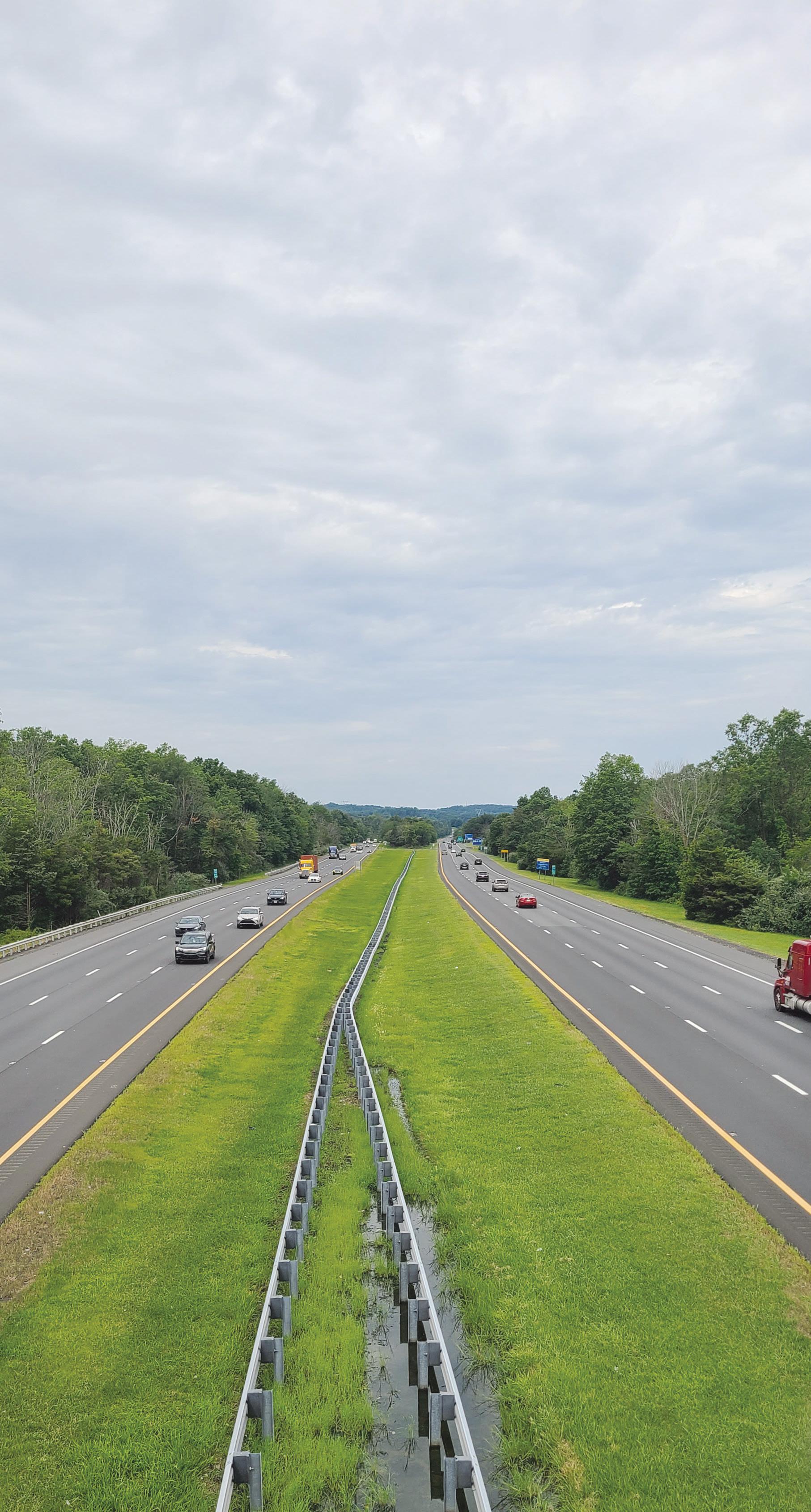

REVOLUTION
HANDHELD PRODUCTS
GRANDSTAND®
STAND-ON MOWERS
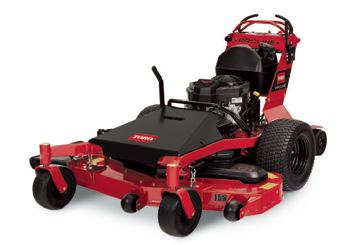
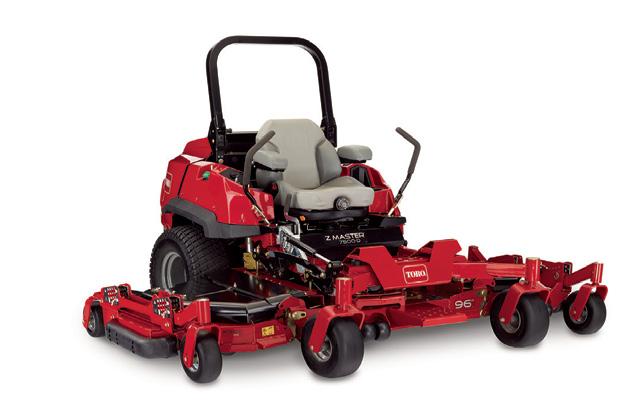
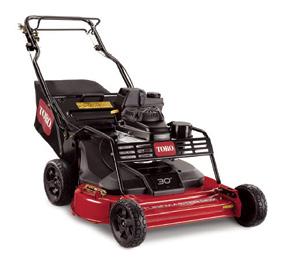
7500-G SERIES ZERO-TURN
PRODUCTIVITY TO A NEW LEVEL Impressive 96” wide cutting deck folds to 75” to fit in most trailers. Vented hood keeps the engine cool with direct air induction from the top. Comes standard with Horizon Technology to help choose the right operating mode for mowing conditions.
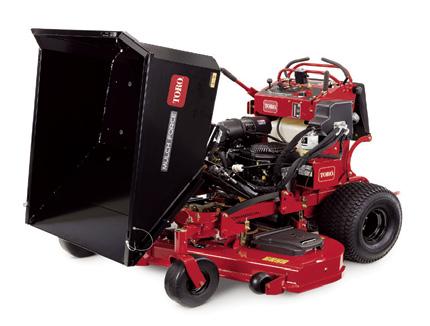
ALL DAY PERFORMANCE
The fully interchangeable 60V Max* Flex-Force battery system powers the entire line of Revolution commercial grade handheld tools. The backpack, available as a power source for the leaf blower, string and hedge trimmers, and is built for comfort and ready to keep jobs moving all day.




TRACTION & HANDLING
A wide stance and optimal balance enhance hillside stability and control.
CUSHIONED SUSPENSION
36”-72” TURBO FORCE ® CUTTING DECKS 96” TURBO FORCE ® CUTTING DECKS
Flex-Ride operator platform suspension self-compensates for operators of all sizes, resulting in less fatigue and higher productivity throughout the day.
GRANDSTAND®
MULTI FORCE™
WITH MULCH DUMP
ALL-SEASON USE
A variety of attachments and accessories such as Mulch Dump, Pro-Force blower, snow thrower, power broom, tine rake, dethatcher and BOSS snow blade all provide the ultimate in productivity.

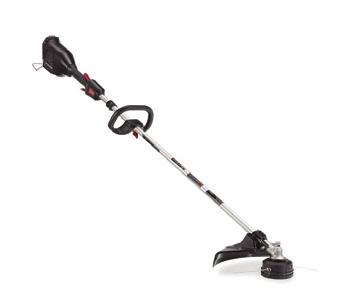
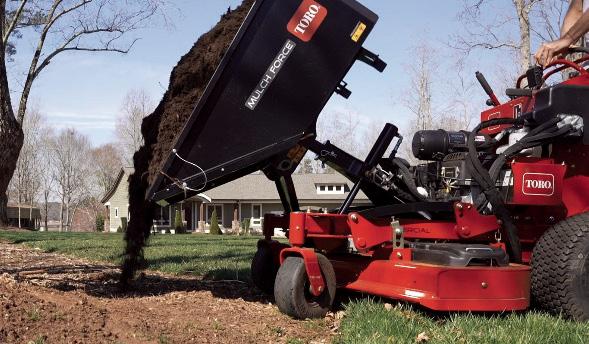
PROLINE™
36”-60” CUTTING DECKS
NO-HASSLE SULKY
2-wheel sulky rotates 360º and folds away when not in use; no need to remove for trailering!
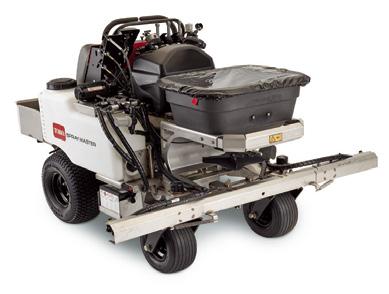
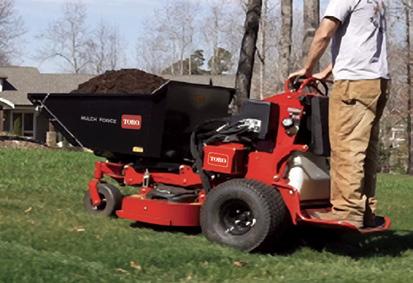
Reliable
